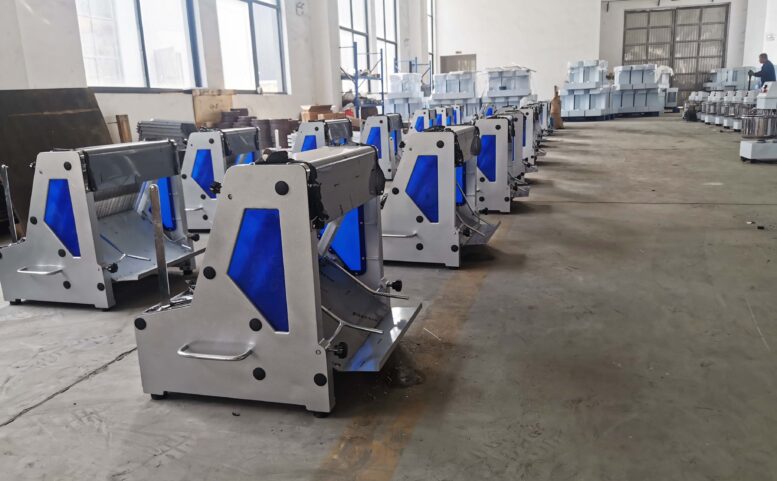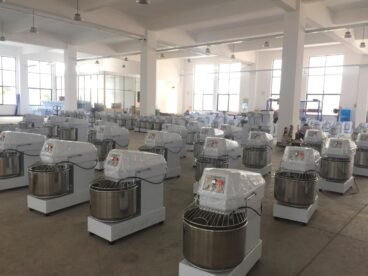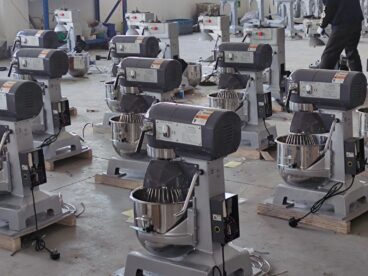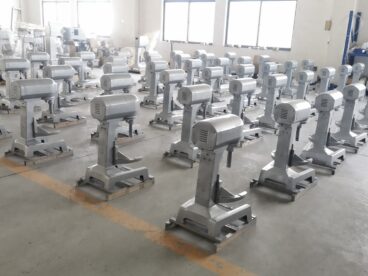Using a commercial slicer in a professional kitchen or deli setting is an essential skill for ensuring consistency, efficiency, and safety. A commercial slicer can quickly and precisely cut a variety of foods, such as meats, cheeses, vegetables, and even breads. This guide will walk you through the steps of using a commercial slicer, highlighting important safety precautions, maintenance tips, and operational techniques.
Understanding Your Commercial Slicer
Components of a Commercial Slicer
Before diving into the usage instructions, it’s important to familiarize yourself with the main components of a commercial slicer:
- Blade: The circular blade is the key cutting component of the slicer. It rotates to slice through the food.
- Food Carriage: This is where the food is placed. It moves back and forth to guide the food through the blade.
- Gauge Plate: This adjustable plate determines the thickness of the slices.
- Knife Sharpener: Some slicers come with an integrated sharpener to maintain the blade’s edge.
- Safety Guard: This component protects the user from accidental contact with the blade.
- Power Switch: Used to turn the slicer on and off.
- Food Pusher: Keeps the food pressed against the gauge plate for uniform slicing.
- Slice Deflector: Guides the sliced food away from the blade for easy collection.
Types of Commercial Slicers
There are different types of commercial slicers, each suited for specific tasks:
- Manual Slicers: Operated by hand, these are ideal for smaller establishments or occasional use.
- Semi-Automatic Slicers: These slicers have an automated food carriage but still require manual control for certain functions.
- Automatic Slicers: Fully automated, these slicers are best for high-volume operations and can continuously slice large quantities of food with minimal supervision.
Safety First
Using a commercial slicer requires strict adherence to safety guidelines to prevent accidents and injuries.
- Wear Cut-Resistant Gloves: Always wear protective gloves to reduce the risk of cuts.
- Use the Safety Guard: Never operate the slicer without the safety guard in place.
- Turn Off When Not in Use: Always turn off the slicer and unplug it when not in use, especially during cleaning.
- Keep Hands Away from the Blade: Never touch the blade while it is in motion. Use the food pusher and not your hands to guide the food.
- Regular Maintenance: Keep the slicer in good working condition with regular maintenance to ensure safe operation.
Setting Up Your Commercial Slicer
Initial Setup
- Clean the Slicer: Before first use, clean all parts of the slicer thoroughly to remove any manufacturing residues.
- Assemble the Slicer: Follow the manufacturer’s instructions to properly assemble the slicer components.
- Secure the Slicer: Place the slicer on a stable, non-slip surface. Ensure that it is firmly secured to prevent any movement during operation.
Adjusting the Slicer
- Adjust the Gauge Plate: Set the desired thickness for your slices using the gauge plate adjustment knob.
- Install the Knife Sharpener: If your slicer includes a sharpener, install it according to the instructions. Regularly sharpening the blade ensures efficient and safe slicing.
Operating the Commercial Slicer
Slicing Procedure
- Prepare the Food: Ensure the food item is free of any bones or hard objects that could damage the blade.
- Place the Food on the Carriage: Position the food securely on the food carriage. Use the food pusher to hold it in place.
- Turn On the Slicer: Activate the power switch to start the slicer.
- Adjust the Speed: Some slicers allow you to control the speed of the blade. Adjust it according to the type of food you are slicing.
- Guide the Food Through the Blade: Using the food carriage, gently push the food towards the rotating blade. Keep your hands on the carriage handle and away from the blade.
- Collect the Slices: The slices will fall away from the blade. Collect them in a tray or on a clean surface.
Tips for Perfect Slices
- Consistent Pressure: Apply consistent pressure to the food carriage for uniform slices.
- Adjust Thickness as Needed: If the slices are too thick or too thin, adjust the gauge plate accordingly.
- Slice Different Foods Separately: Clean the slicer between different types of foods to prevent cross-contamination and maintain flavor integrity.
Cleaning and Maintenance
Cleaning the Slicer
- Turn Off and Unplug: Always turn off and unplug the slicer before cleaning.
- Disassemble: Remove the food carriage, blade, and other removable parts.
- Clean Each Part: Wash each part with warm, soapy water. Use a brush to remove any food particles.
- Sanitize: Sanitize all parts to ensure hygiene. Use a food-safe sanitizer.
- Dry Thoroughly: Dry each part completely before reassembling to prevent rust and corrosion.
Regular Maintenance
- Sharpen the Blade: Regularly sharpen the blade using the integrated sharpener or a professional sharpening service.
- Lubricate Moving Parts: Use food-grade lubricant on the moving parts to ensure smooth operation.
- Inspect for Wear and Tear: Regularly inspect the slicer for any signs of damage or wear. Replace any worn-out parts immediately.
Troubleshooting Common Issues
Slicer Won’t Turn On
- Check the Power Connection: Ensure the slicer is plugged in and the outlet is functioning.
- Inspect the Power Switch: Make sure the power switch is in the correct position.
- Look for Blown Fuses: Check the slicer’s fuse and replace if necessary.
Uneven Slices
- Blade Dullness: Sharpen the blade if the slices are uneven.
- Improper Gauge Plate Setting: Ensure the gauge plate is properly adjusted.
- Inconsistent Pressure: Apply consistent pressure to the food carriage.
Noisy Operation
- Lubrication Needed: Lubricate the moving parts.
- Blade Alignment: Check the blade alignment and adjust if necessary.
- Loose Parts: Tighten any loose screws or components.
Advanced Slicing Techniques
Slicing Meats
- Partially Freeze Meats: For cleaner cuts, partially freeze meats before slicing.
- Use Consistent Strokes: Move the food carriage in smooth, consistent strokes for uniform slices.
Slicing Cheeses
- Use a Non-Stick Spray: Prevent cheeses from sticking to the blade by using a food-safe non-stick spray.
- Adjust Thickness Carefully: Cheeses require precise thickness adjustments to avoid crumbling.
Slicing Vegetables
- Use a Firm Grip: Ensure a firm grip on the food pusher to prevent slipping.
- Slice Thinly: For vegetables like cucumbers and tomatoes, use a thin slice setting for the best results.
Conclusion
Using a commercial slicer effectively requires understanding its components, adhering to safety protocols, and performing regular maintenance. Whether you’re slicing meats, cheeses, or vegetables, following these guidelines will help you achieve consistent, high-quality results while maintaining a safe and efficient kitchen environment. By mastering the use of a commercial slicer, you can enhance your culinary operations and deliver perfectly sliced products to your customers.






